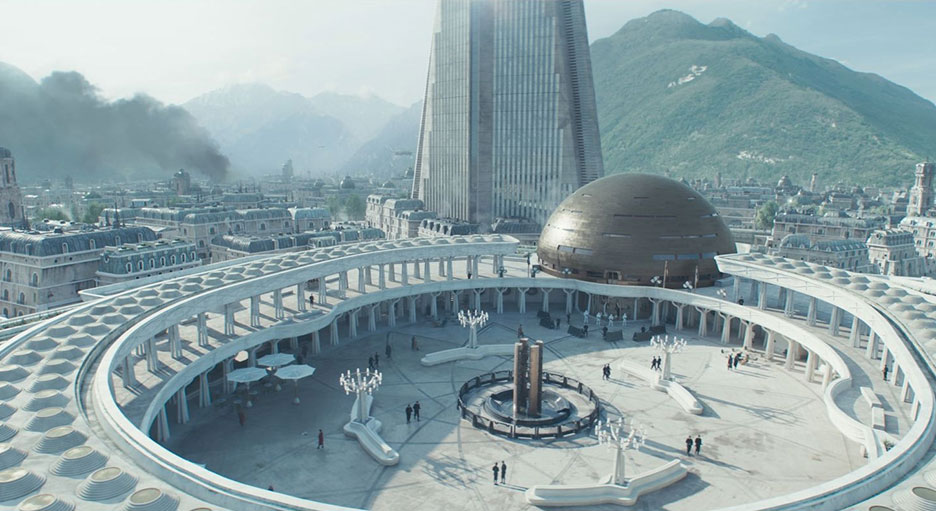In part one of a two-part story, the production’s visual effects producer and visual effects supervisor discuss the effort to create over 4,000 effects shots for the Emmy-nominated Lucasfilm series.
By Mark Newbold
“It was a good opportunity to expand our horizons,” says TJ Falls, vice president of visual effects at Lucasfilm, about the team’s work to create a grounded aesthetic for both seasons of Andor (2022-25). After Rogue One: A Star Wars Story (2016) established the tone for the adventures of Cassian Andor (Diego Luna), the Andor production opted to utilize a number of existing locations for filming in the United Kingdom and around the world. It was a tactic previous Star Wars productions also chose (for example, 1999’s Star Wars: The Phantom Menace traveled to Italy and the Caserta Palace for the interior of the Theed Palace on Naboo), but integrating these locations to such a degree was something new for Industrial Light & Magic, a choice Falls appreciates.
“It allowed us to go out in the world and find a real base reference,” explains Falls, who was also the overall visual effects producer for Andor. “That was something the team worked hard to capture. We’re actually there in the city or in the mountains, so it was wonderful to be able to tie real-world locations into our digital work.”
The debut season of Andor leaned heavily into this physical integration. But, with a very real-world, global pandemic happening around the production, season one had its international travel wings clipped, as Falls explains.
“We couldn’t travel, but we still managed to gather reference material, including some for the ship-breaking yards on Ferrix. For season two, we were fortunate enough to finally be able to travel, so we flew to Lake Como and the Italian Alps to capture plates for Ghorman, among other locations.”
Joining Falls, production visual effects supervisor Mohen Leo picks up the conversation.
“Being able to travel to Spain for a variety of locations on season two allowed [production designer and executive producer] Luke Hull to rely much more heavily on the look of existing locations that were compatible, particularly the Senate building. Once we did the first location scout at the City of Arts and Sciences in Valencia, we were looking around, thinking, ‘Wow, it looks like Coruscant already.’ That made a huge difference, having that basis, both for interior and exterior spaces, so we could then use visual effects to build on and make it feel like Star Wars.”
The practicalities of having a ready-built set in the form of an existing building clearly had their benefits. Still, the broader task of adding visual effects presented its own challenges, as Leo explains.
“One thing I took away from the project is to push as much as possible for real locations,” he says. “Using an existing building during a shoot allows people to make informed decisions that stick, because if you have something that already looks 50%, 60%, or 70% the way you want it to, everyone has the confidence to say ‘Okay, this is the frame that we want, and we understand that we’re going to put this building in the background. Also, you have the composition of the lighting and the weight of the architecture, which makes it much easier, rather than having a blank canvas in post-production and then debating what it should look like.
“For example,” Leo continues, “there were the mountains around Ghorman. A couple of people from the production team and I went to Italy and did a two-day helicopter shoot. We felt strongly that even those locations where we would never actually shoot with a full crew or with actors should be based very specifically on real landscapes. That allowed us to put the Star Wars architecture in there and have that foundation.”
With the tremendous amount of work required to bring these locations to life, the balance between real locations and visual effects is a delicate one, based on story requirements, budget, and time.
“When we go location scouting, I always ask the director of photography [for season two, Damián García, Christophe Nuyens, and Mark Patten], ‘What are we keeping from the location?’” says Leo. “Because there has to be value in us being there. We were on location in Spain, and a Coruscant scene was discussed, which involved two people standing by a railing, looking out across the fictional cityscape. If we’re going to replace the whole city, then we don’t need to shoot that in Spain.” If you want that view, we can shoot that back in London on a green screen set because it’s easier, and we’ll have more control over the lighting. That, for me, is the main thing, having a clear idea when you go on location of what we keep from the location, and why we are there?”
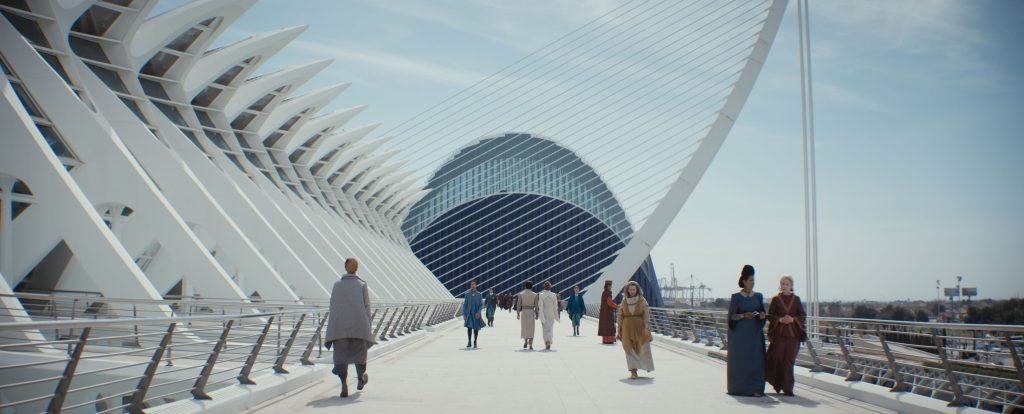
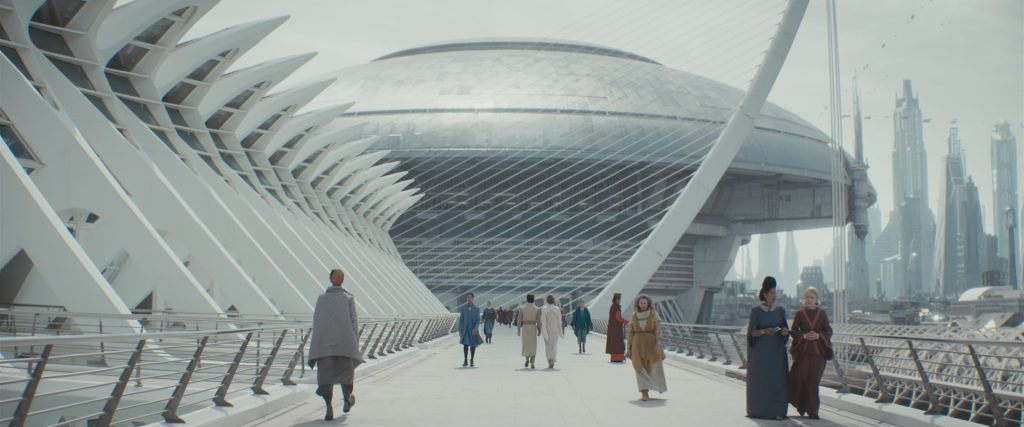
The use of natural light throughout the series is even more impressive when considering the balance between physical structures and digital extensions. Bathing the action in brightness or shadow, regardless of where and how it was shot, Leo explains, is how this integration was managed.
“We work very closely with the DP on that,” says Leo. “There are scenes where people walk directly from a stage set in London onto something that’s on location in Valencia. In the context of the story, it feels like one continuous location, even though they were shot months apart in two different countries. Obviously, we take lots of photographic reference. We have the plates of the one side at hand when we’re doing the other, and we’re constantly checking to make sure things fit together. On this project, we had a plan for each of those things before we went on location and shot it. We’re not trying to force things together in post; they’re meant to go together.”
“That’s exactly it,” adds Falls. “It’s the collaboration with the DP and lighting team, but also with previs, with techvis, and knowing that we’re going from studio space to location space. We had the opportunity to plan that out very specifically, each step of the way. And what helped us succeed is that we had a plan, and we were able to push it through to the best of each department’s abilities to deliver on it.”
Having a plan is essential to any well-run production, and on a visual effects-heavy series like Andor, it’s even more vital. Managing the process requires unique skills and systems to marshal all the information and elements into one place, as Falls explains.
“You’ve got to manage all these people and figure out who’s doing what, breaking it down to what the responsibilities of each person are. You start with something that’s massive, and we start to split things up between our teams and vendors. Ghorman is primarily a Hybride sequence; we’ve got Scanline VFX dealing with Mina-Rau, and we work with [ILM visual effects supervisor] Scott Pritchard to ask how we’re going to slice up this pie.
“It’s like eating an elephant one bite at a time,” Falls adds with a smile. “That translates from the production side into post and dealing with our vendors, and it’s all about clear communication, having people that you can build a shorthand with and have trust with, and then let them do what they do and not overmanage it.”
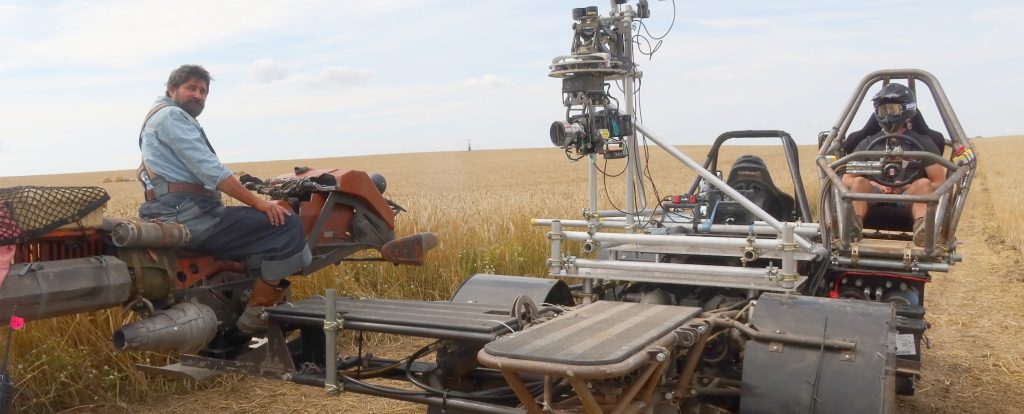
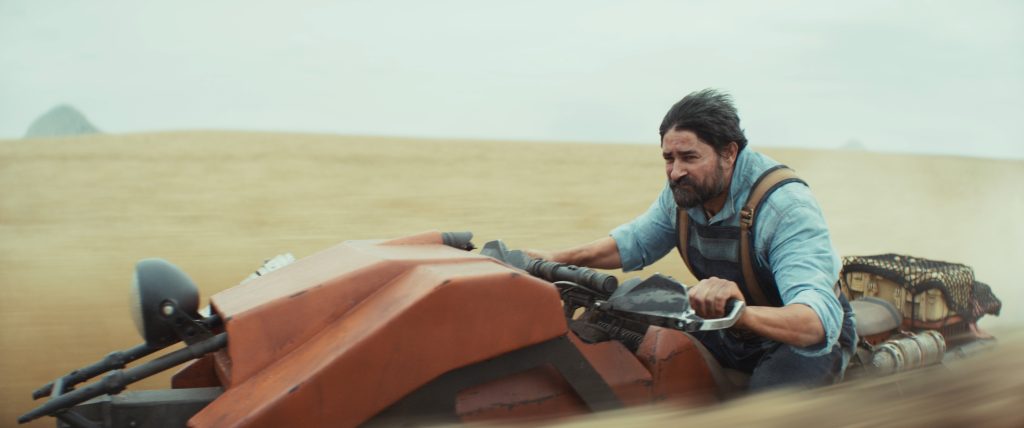
Truly a mammoth task, but that’s just the start of it. “Then, each individual team brings their expertise to build it right back up the mountain,” Falls continues, “so that Mohen has the opportunity to have that creative outlook over everything, I make sure it’s moving at the pace that it’s supposed to and that we’re hitting our schedule and staying on budget while making sure that [creator and showrunner] Tony Gilroy is getting what he wants for his vision of the show.”
There are many unsung heroes on any production, and amongst those are the production managers (including Frédérique Dupuis and Alyssa Cabaltera from ILM and Anina Walas from Lucasfilm, among others), who, on the visual effects team, juggle countless shots and give structure to the process for both the production and the partner studios. In its completed form, Andor might appear to be a graceful swan, but under the water’s surface, its legs are furiously kicking to propel it forward, as Mohen Leo elaborates.
“The visual effects production team has to keep track of over 4,000 shots, and each one of those shots has dozens and dozens of assets, be it art and reference or photography and scans, and they have to funnel all of that to where it needs to land and then send any questions back to me in a manageable way. I answer the creative questions. The logistical and organizational work is done by a team of incredibly diligent people without whom none of this would be possible.”
Along with this beehive of activity tracking all the elements, a database system, unique to each production, needs to be put in place.
“We find on each show that you have similar tool sets and similar ways of databasing things,” Falls says, “but you have to build it around the specific challenge of the show and the personalities involved. It’s about what Mohen likes and the types of data that we’re getting in.
“You have people like [on-set visual effects supervisor] Marcus Dryden, who was on set managing that side of things. His role was specific to season two, and it worked really well, that marriage of supervision responsibilities between me and our Lucasfilm production team and our production manager, and the coordinators building the database. That worked well for Mohen to get the notes in and out and track the scans and the data, but presenting it in forms that fit the specific way we were working with our vendors on this show. It wasn’t groundbreaking, but it was specific to what we needed.”
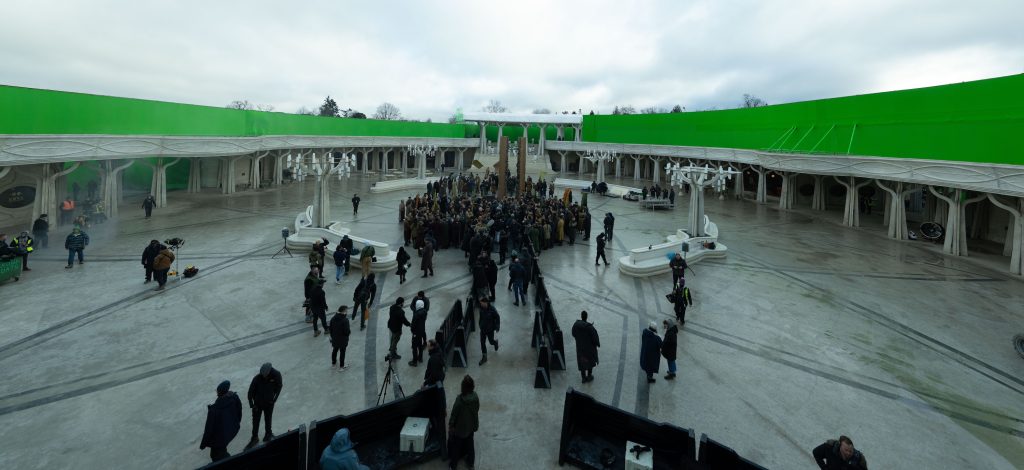
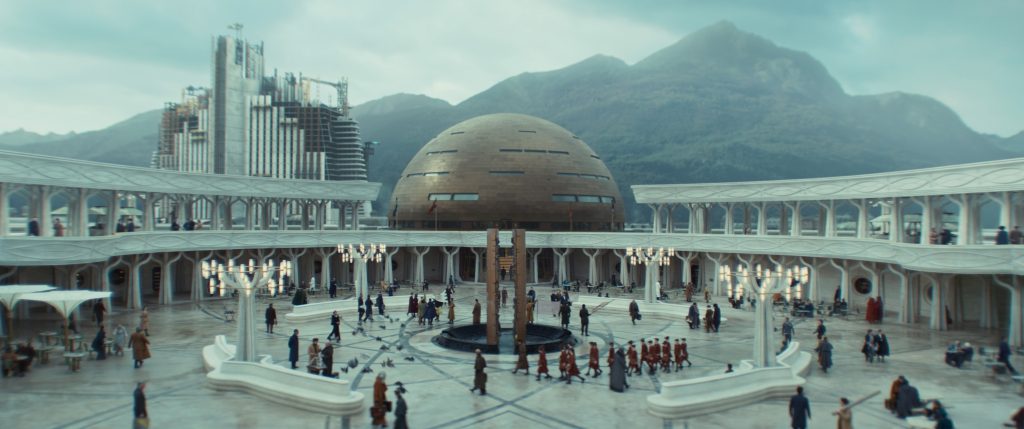
The database is set up, a system is in place, production managers have a process, and the elements are tracked as they come in. “It’s absolutely critical because it gives me the luxury to say, ‘Hey, where’s that scan from that location that we shot in that scene six months ago in Valencia?’” explains Falls. “And within 10 seconds, somebody will go, ‘Here it is.’ That shouldn’t be taken for granted because I’ve been on many shows where that can turn into an archaeological dig that can take days, or sometimes you don’t find it at all.”
With this bespoke Andor structure in place for season one, Leo could then take that and refine it even further for season two, a huge advantage, especially considering episodic television wasn’t a familiar environment for him.
“Season one was a big learning experience,” explains Leo. “I’d never done episodic television before; I’d only done movies, so dealing with that much content in such a compressed time was challenging. Also, the interaction with editorial is slightly different on episodic television. With every project, there’s an element of adjustment, but, there’s also an element of learning.”
“We had the luxury of a number of production staff carrying over from season one to season two,” says Falls. “So we learned in real time and adjusted things to fit. You could port it, but it wouldn’t necessarily work as succinctly as it does when it’s crafted around the group, and for season two in particular, I felt that we ended up crafting a really great system. The team was unbelievably adept in making sure that every person got exactly what they needed as quickly as humanly possible.”
The script is the tramline for everything that ends up on-screen, but in the realm of visual effects and working with the rest of the crew, there needs to be a clear understanding of what’s required and how to do it, something that comes from the top, as Leo explains.
“When we’re planning a shoot, we sit down with the director, the cinematographer, and the assistant director and ask, ‘What are you trying to achieve, what do we need to contribute in terms of the visual effects, and how do we make sure we get what we need during the shoot?’ Then we take meticulous notes.”
However, it doesn’t always go as smoothly as planned. “We’re staring at the monitor as they’re shooting, but then somebody drops the microphone into frame, so that’s something we have to paint out,” Leo continues. “Maybe we have to do a set extension that we didn’t expect. Then there’s a step in post-production where, along with editorial, we’re looking at the early versions of the cuts, and that’s where we do something called the statement of work, where we look at each individual shot and go, ‘Okay, here’s all of the things we need to do for this particular shot across the various disciplines in order to complete it.”
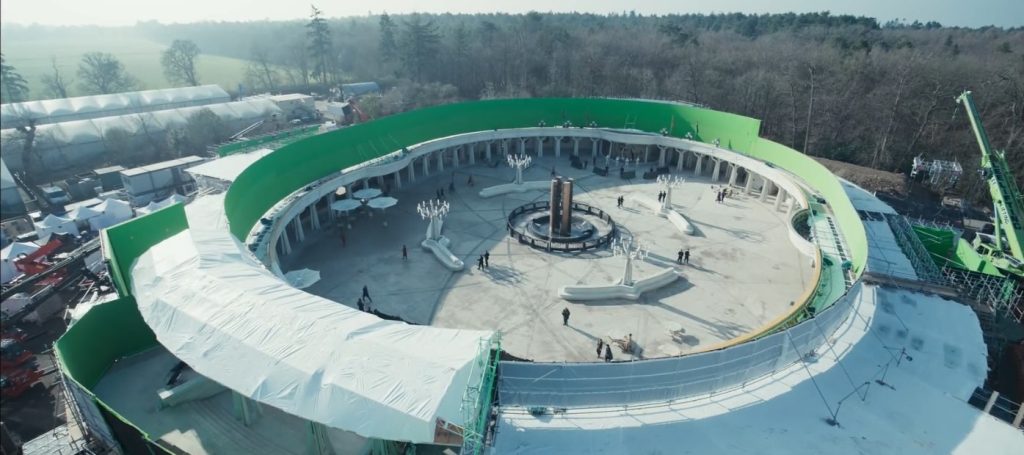
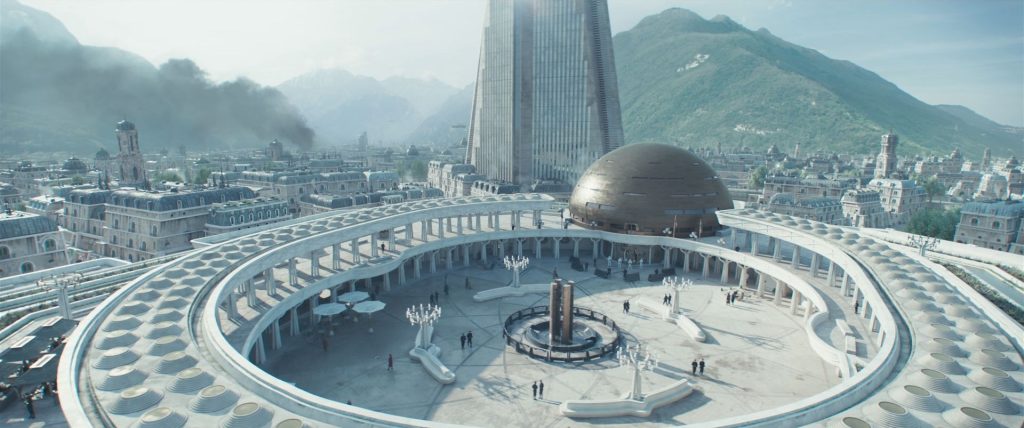
Like all aspects of a production, visual effects come at a cost, with so many highly skilled experts putting their time and craft into a project. The team is responsible for both managing costs and ensuring that additional required effects can be covered within the allotted budget.
“There’s a constant ebb and flow of evaluation, so we work closely with editorial, seeing the working cuts,” Falls notes. “We go in with [editor] John Gilroy and they show us little pieces, and that allows the opportunity for some give and take as we evaluate things and look at shots and go, ‘Well, this is more than we had planned, or maybe there’s another sequence where they’re using less than what we had planned,’ and so there’s a little bit of horse-trading that happens.
“What we strive for,” Falls continues, “is to not say we can’t do something because it wasn’t planned. If there are 10 additional seconds needed in the show, how can we do it? Can we find a way that still delivers everything that’s needed, but also in line with the number of resources we allotted? Then, we’re back on budget, or I have to figure out how to take care of it, but we always start with what is the creative desire for the scene. How is it furthering the story? We don’t want anything that’s egregious or over the top just for the sake of being something flashy, so we have to make sure that everybody is in agreement that ‘Okay, it’s more than expected but it serves the story, it does what Tony needs, and now it’s our job to figure out how can we make it work.’ I think we did a pretty good job of that.”
Join us next time as we continue our conversation with TJ Falls and Mohen Leo to delve into the logistics of making Andor, the teamwork required to bring Cassian’s world to the screen, and their favorite moments from the second season.
—
Mark Newbold has contributed to Star Wars Insider magazine since 2006, is a 4-time Star Wars Celebration stage host, avid podcaster, and the Editor-in-Chief of FanthaTracks.com. Online since 1996. You can find this Hoopy frood online @Prefect_Timing.
